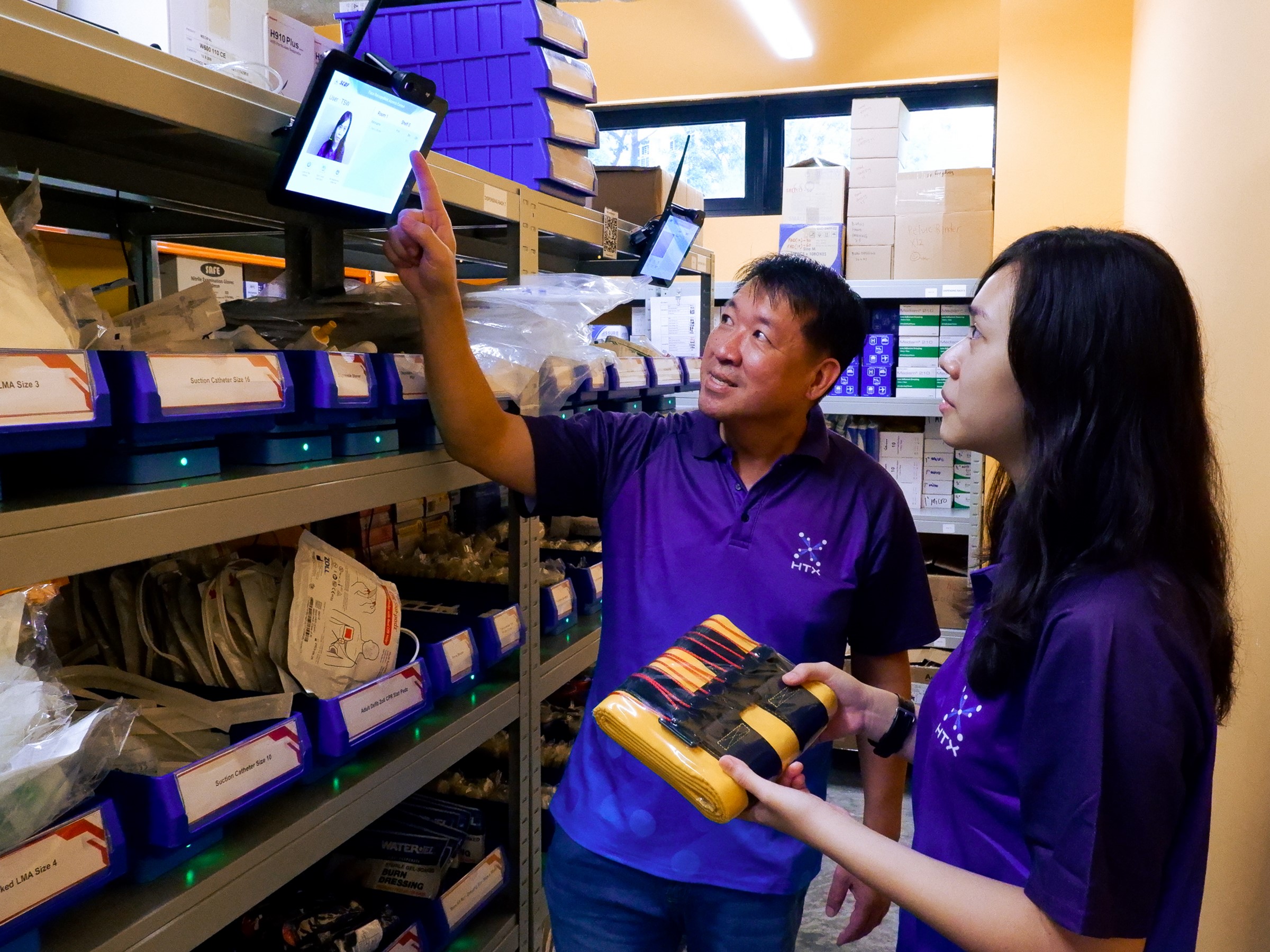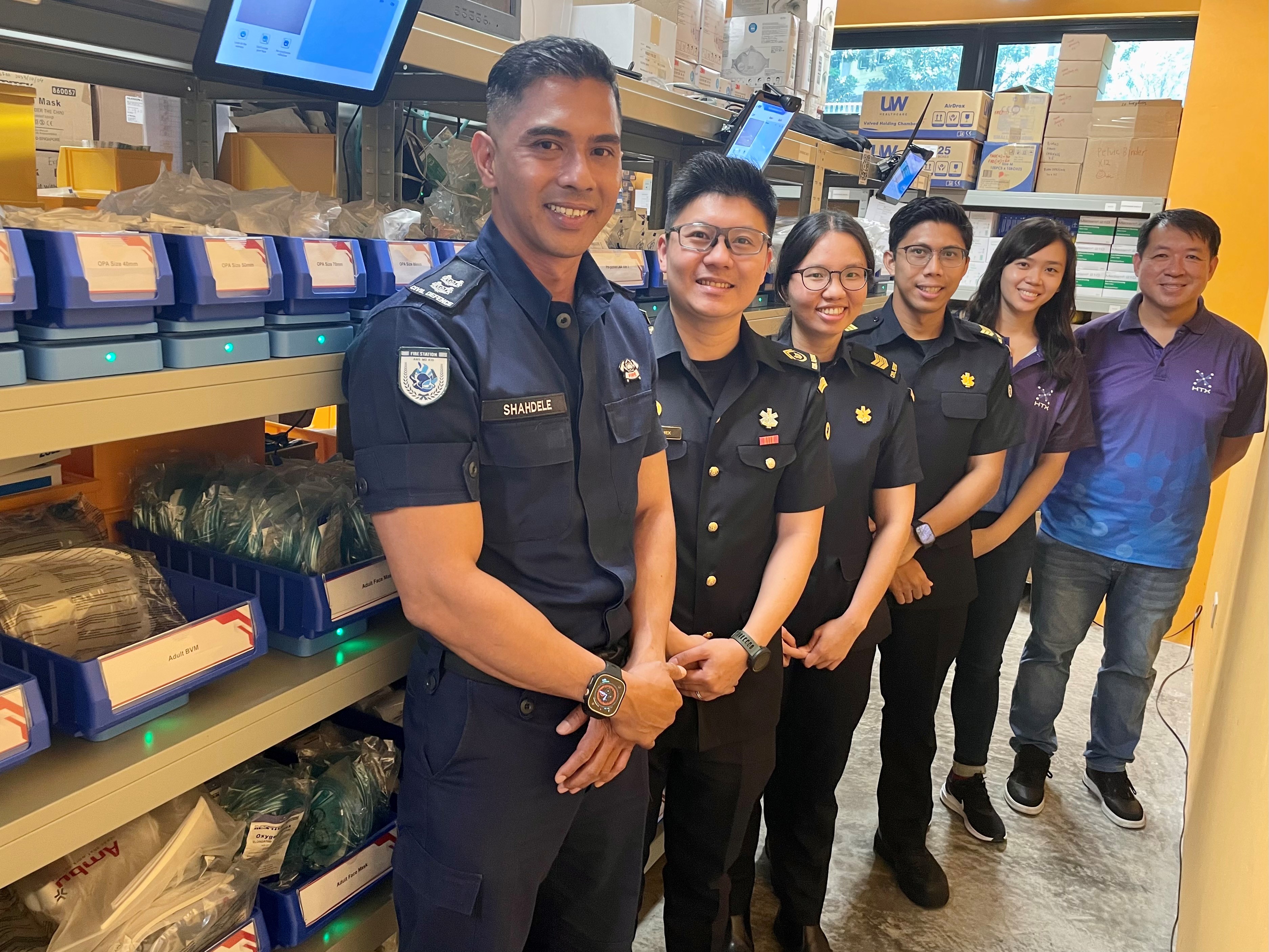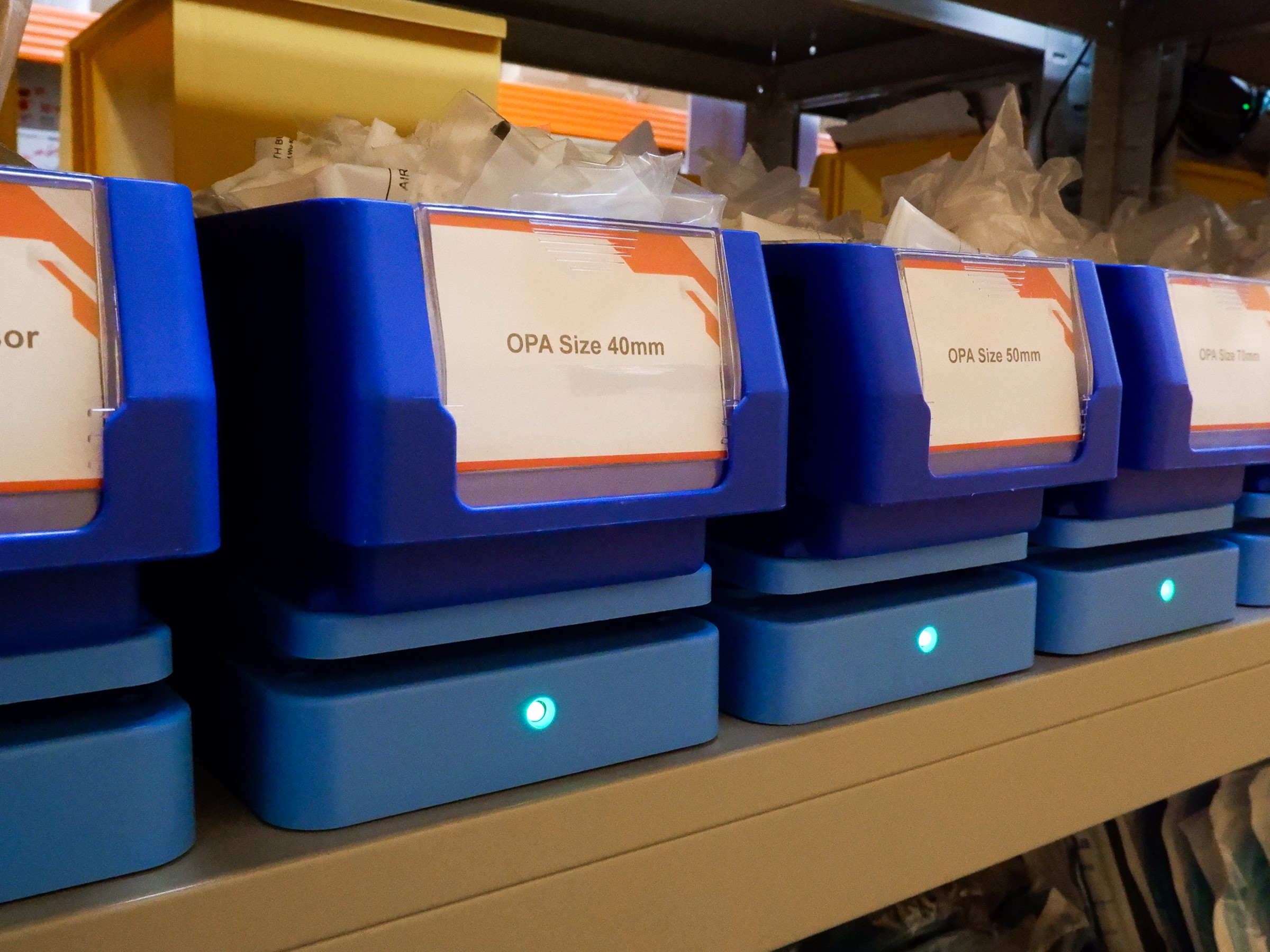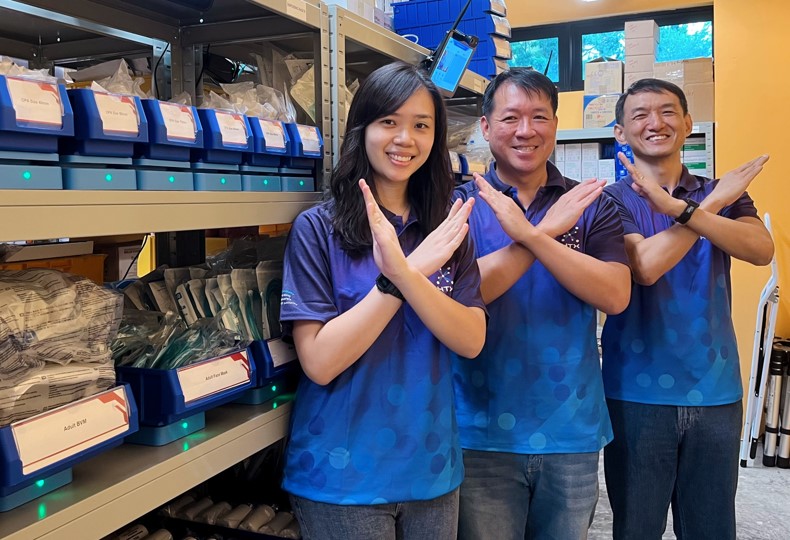
Head (Training & Immersive Systems) Mr Darren Ang looking on as Engineer (Training & Immersive Systems) Ms Teo Shi Wei picks an item from the Automated Medical Store (Photo: HTX/ Jasline Tan)
Alcohol swabs, bandages, ECG electrodes, and medicines are just some of the thousands of items stocked in the medical store at fire stations for use by Singapore Civil Defence Force’s (SCDF) paramedics during medical emergencies.
Medical disposables, such as gauzes and bandages, frequently get rapidly consumed when responding to medical emergencies. To ensure that they are always adequately equipped for the next call, paramedics restock the ambulance from the fire station's medical store, which can have up to approximately 10,000 dispensable items when fully stocked.
From paper to digital – leveraging technology to automate the medical store
Paramedics at the fire stations currently need to manually manage the medical equipment and dispensable items in the medical store daily such as physical accounting of available stock, dispensing of required quantities of stock, and ordering resupplies.
To ease the manual stock management process, a team from HTX’s Civil Defence Programme Management Centre and SCDF’s Ang Mo Kio Fire Station jointly conceptualised the Automated Medical Store (AMS), a grab-and-go automated self-checkout system that uses facial recognition and weight sensors to detect items taken off the shelves.
The concept is similar to Amazon Go stores that are equipped with “Just Walk Out” technology, allowing consumers to enter a store, take what they want, and leave without going through a cashier with the bill automatically charged to the consumer’s account.
“The automated medical store is a shift from the labour-intensive and time-consuming nature of traditional inventory management, which is prone to human error,” said Mr Darren Ang, Head, Training & Immersive Systems, Civil Defence Programme Management Centre, HTX, who has been managing the project from conceptualisation to its ongoing trial. “The automated medical store provides paramedics with a fuss-free experience and frees them up from administrative tasks to focus on operational needs and training.”
Aside from greater convenience and manpower savings, the turnaround time for the ambulance to be ready for the next call is also reduced. “This will translate into improved operational efficiency and better service for the public, and ultimately save lives,” Darren added.
“The key idea was to leverage technology to revolutionise traditional solutions into a more effective process in this digital age. As the end users at the frontline units, it is imperative for us to identify the gaps in our daily processes that needs to be mended in order for us to come up with solutions that are both realistic and effective,” said LTC Shahdele Isman, Commander, Ang Mo Kio Fire Station, who is Team Lead of the SCDF automated medical store project.
“I am grateful for the opportunity to collaborate with HTX to conceptualise, design, and ultimately, develop the automated medical store that we see today,” he added. “The AMS has boosted productivity and enhanced the logistics management process for medical items and equipment, resulting in reduced stress and fatigue faced by our EMS [Emergency Medical Services] responders during their operational shifts.”
 HTX and SCDF Station 32 officers at the Automated Medical Store (Photo: HTX/ Rachel Tan)
HTX and SCDF Station 32 officers at the Automated Medical Store (Photo: HTX/ Rachel Tan)
Embracing technology with innovative thinking
The automated medical store is not just about using technology, Darren said. The project involved process and product redesign and the team had to work closely to take into consideration the user experience, cost-benefit analysis, layout constraints due to limited space, as well as other challenges.
For example, one challenge was how the weight of certain individual items in the medical store such as gauze and needles were practically negligible, affecting the load cell sensors’ ability to accurately track the items. To overcome this, the team repackaged the items into bundles or added a counterweight for the items, Darren explained.
 Load cell sensors are one of the technologies used in the ongoing proof-of-concept trial of the Automated Medical Store. (Photo: HTX/ Jasline Tan)
Load cell sensors are one of the technologies used in the ongoing proof-of-concept trial of the Automated Medical Store. (Photo: HTX/ Jasline Tan)
Force multiplying fire stations for the future
The automated medical store is currently on trial at the Punggol Fire Station, Singapore’s first smart fire station equipped with cutting-edge technologies, and serves as a test bed for future implementation across SCDF.
HTX and SCDF are working together on the proof-of-concept to test for robustness and accounting accuracy, with the intention to roll out force-wide. The trial is expected to run until February 2023.
The automated medical store is envisioned to be a part of the wider supply chain management within SCDF, optimising resources where and when needed by leveraging data analytics on usage patterns to anticipate future and cyclical demands for specific inventory items across fire stations while reducing wastage. This would bring significant time savings in inventory management and ensure that a healthy stock level is maintained to support the needs of SCDF’s frontline operations.
“The automated medical store is another milestone towards the Smart Fire Station vision where sensors, AI, and data analytics are used to assist the organisation to function more effectively and efficiently towards providing world-class firefighting and pre-hospital care to members of the public,” said Mr Ling Kok Yong, Director, Civil Defence Programme Management Centre, HTX.
“The automated medical store allows the ambulance crew to adopt the ‘Grab-and-Go’ concept, without having to manually account and update the stock-card and do manual stock re-ordering. When fully implemented, it will allow SCDF to reap the full benefits of “Just-in-Time” store management, where medical items will be pushed down to the respective stores automatically by the warehouse handler as and when the stocks run low,” he added. “HTX will continue to work closely and hand-in-hand with SCDF in its digital transformation journey.”

(From left to right) Engineer (Training & Immersive Systems) Ms Teo Shi Wei, Head (Training & Immersive Systems) Mr Darren Ang and Director, Civil Defence Programme Management Centre Mr Ling Kok Yong striking the quintessential HTX “X” pose at the Automated Medical Store proof-of-concept at Punggol Fire Station. (Photo: HTX/ Michelle Lim)
Read related article: Punggol Fire Station Blazing the Way for Future Smart Fire Stations